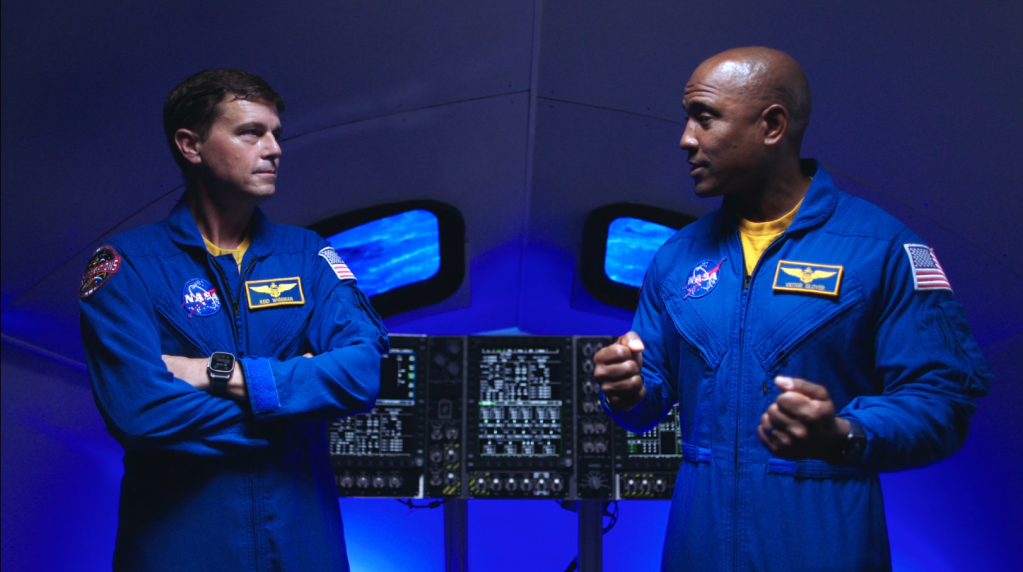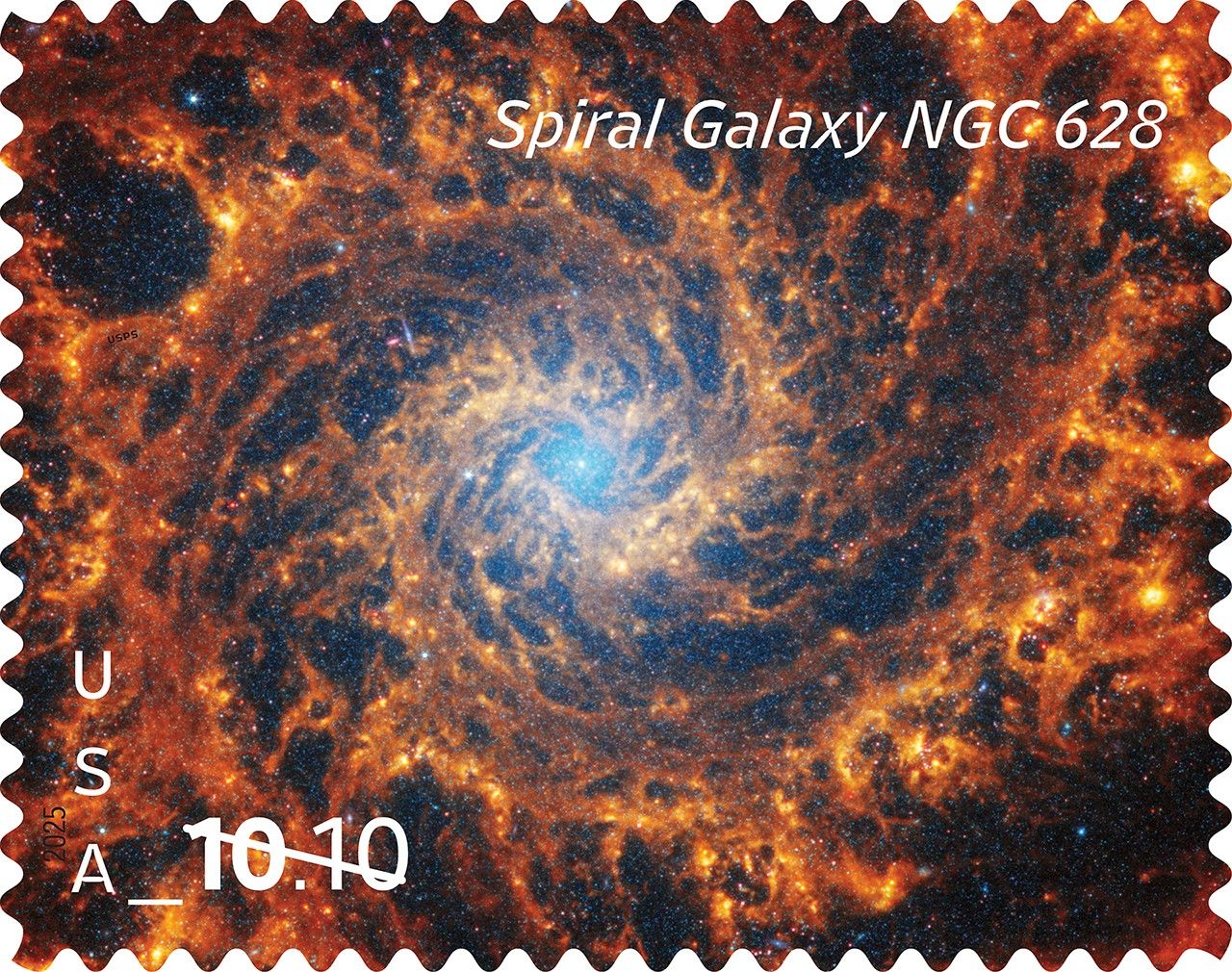With just two weeks remaining until their Dec. 6, 1972 launch on the final Apollo Moon landing mission, Apollo 17 astronauts Commander Eugene A. Cernan, Command Module Pilot Ronald E. Evans, and Lunar Module Pilot Harrison H. “Jack” Schmitt, a geologist, and their backups John W. Young, Stuart A. Roosa, and Charles M. Duke, completed their final training sessions for the lunar surface excursions, including setting up the scientific instruments, at the Taurus-Littrow landing site. In addition to the lunar geology objectives of collecting rock and soil samples during three traverses using the Lunar Roving Vehicle (LRV), Cernan and Schmitt planned to deploy nine instruments on the surface, many flying for the first time, that continued to return data long after their departure.
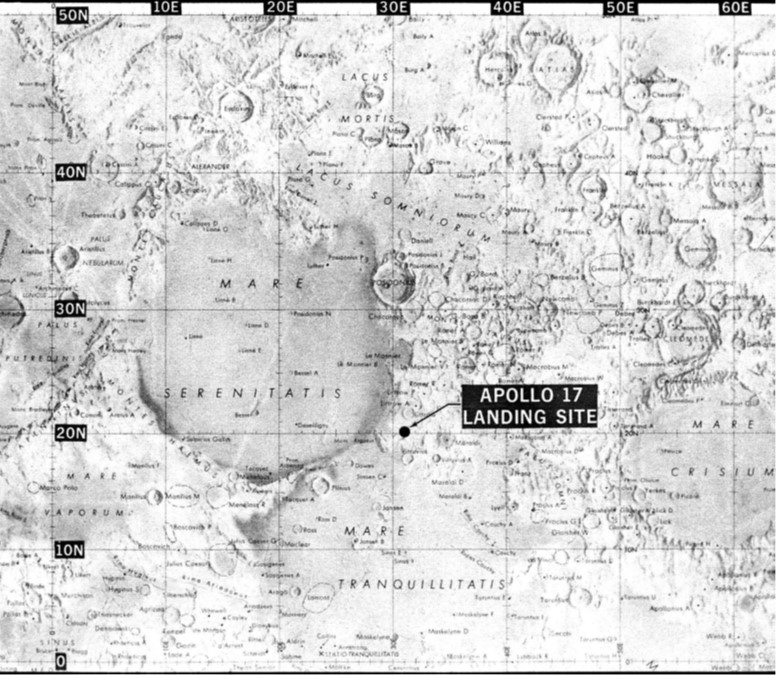
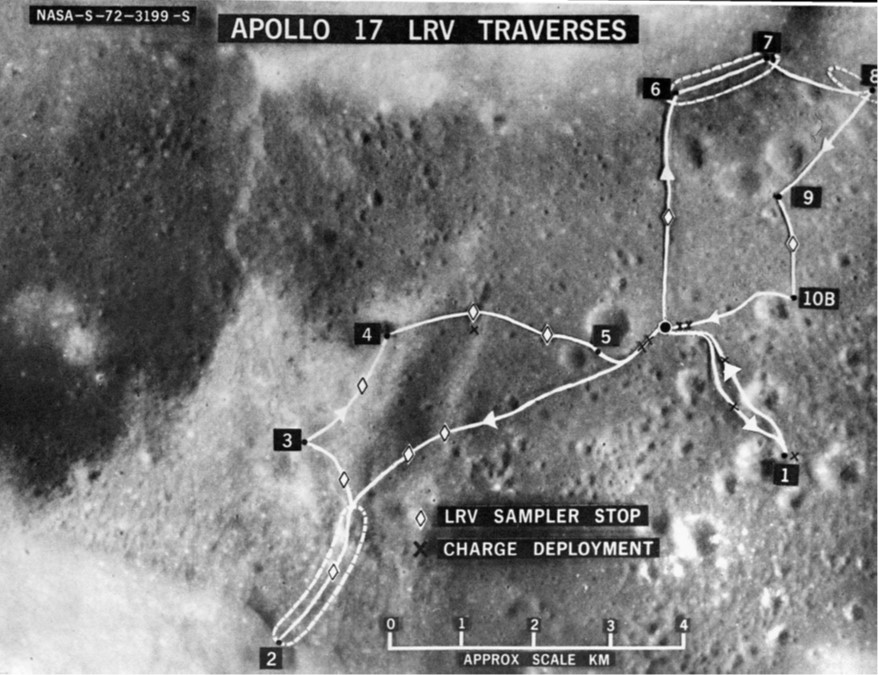
Left: Map of the Moon showing the Apollo 17 Taurus-Littrow landing site near the edge of Mare Serenitatis. Right: The Apollo 17 Taurus-Littrow landing site showing the three planned traverses using the Lunar Roving Vehicle.
On Feb. 16, 1972, NASA announced the selection of the Taurus-Littrow region as the landing site for Apollo 17. The landing zone, named after the Taurus Mountains and the Littrow Crater to its north, lies just past the southeast edge of the Mare Serenitatis at about latitude 20 degrees north and longitude 30 degrees east. The Taurus-Littrow site’s mix of mountain rock slides and volcanic cinder cones, yielding older and younger samples, respectively, was expected to help fill gaps in scientists’ understanding of the Moon’s history. One of the sample sites included rockslide material from peaks as high as 7,000 feet, and scientists expected those samples to be older, or at least of different composition from, samples returned by previous Apollo missions. The darker material at the landing site itself, together with observations from Apollo 15 of possible volcanic cinder cones, led scientists to expect samples of a younger age. The astronauts planned to conduct extensive geologic explorations during three traverses using the third and final LRV.
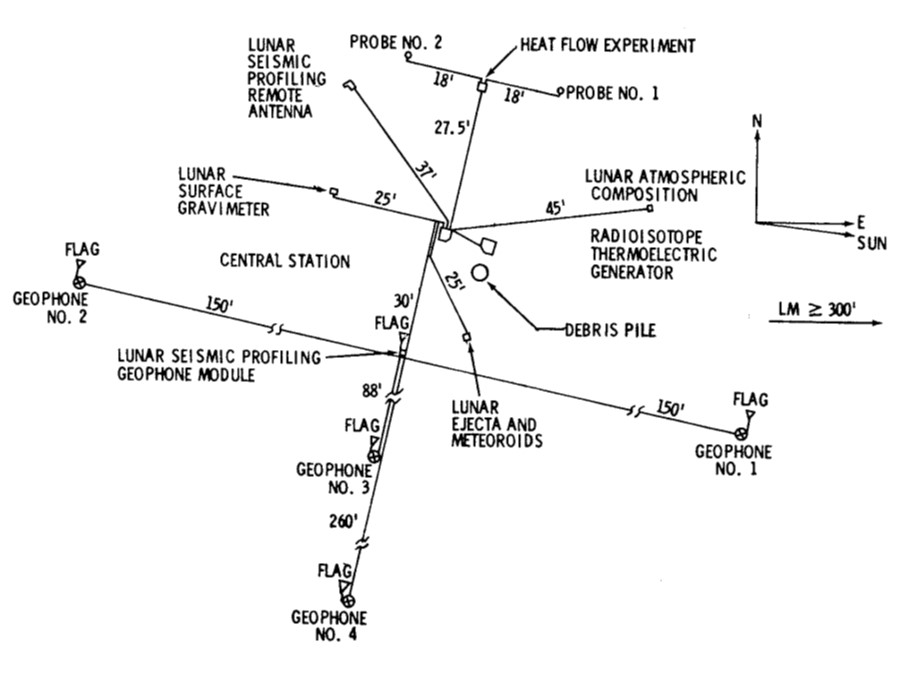
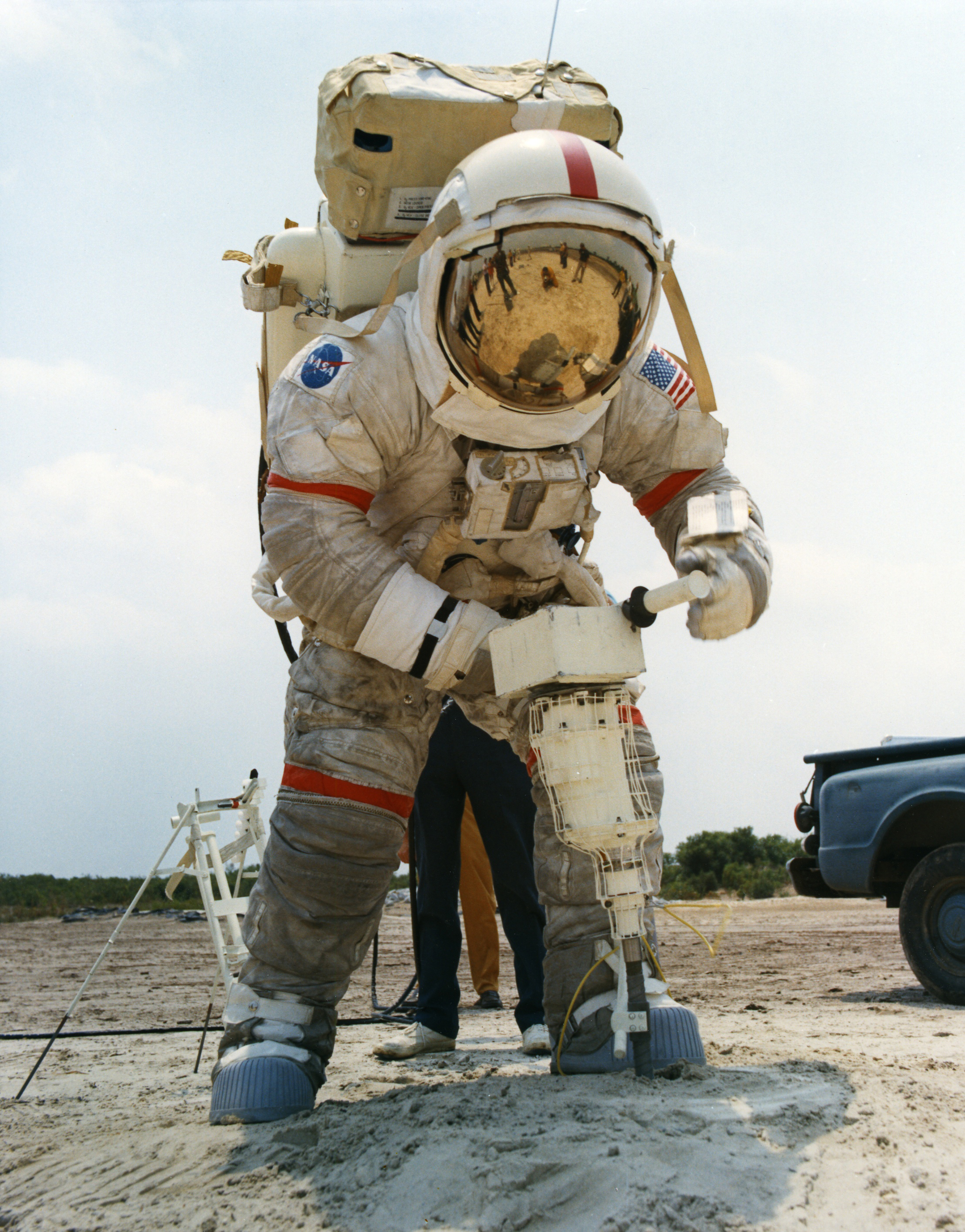
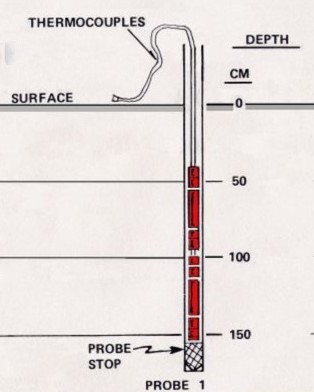
Left: Schematic diagram showing the planned setup of the Apollo Lunar Surface Experiment Package instruments. Middle: Apollo 17 astronaut Eugene A. Cernan trains with the drill to place the probes for the Heat Flow Experiment. Right: Schematic of one of the Heat Flow Experiment probes.
In addition to conducting a geologic survey of the landing site, including collecting rock, soil, and core samples, Cernan and Schmitt planned to deploy nine scientific instruments, during their first lunar excursion. Five of these experiments comprised the fifth and final Apollo Lunar Surface Experiments Package (ALSEP) array. A Central Station served as a control and communications hub for the ALSEP instruments that received power from a radioisotope thermoelectric generator using heat from the radioactive decay of plutonium-238 to generate electricity. The ALSEP instrument included:
The Heat Flow Experiment (HFE) – to study the thermal conductivity of the top 2.5 meters of the lunar surface to better understand the Moon’s internal heating process.
The Lunar Seismic Profiling Experiment (LSPE) – to understand the Moon’s interior structure, four geophones will record seismic waves generated by explosive charges set off after the astronauts’ departure.
The Lunar Atmospheric Composition Experiment (LACE) – to measure any trace atmosphere that might exist at the lunar surface.
The Lunar Ejecta and Meteorite (LEAM) experiment – to measure the physical properties of primary and secondary particles impacting the lunar surface.
The Lunar Surface Gravimeter (LSG) experiment – to confirm the existence of gravity waves predicted by Albert Einstein’s general theory of relativity.
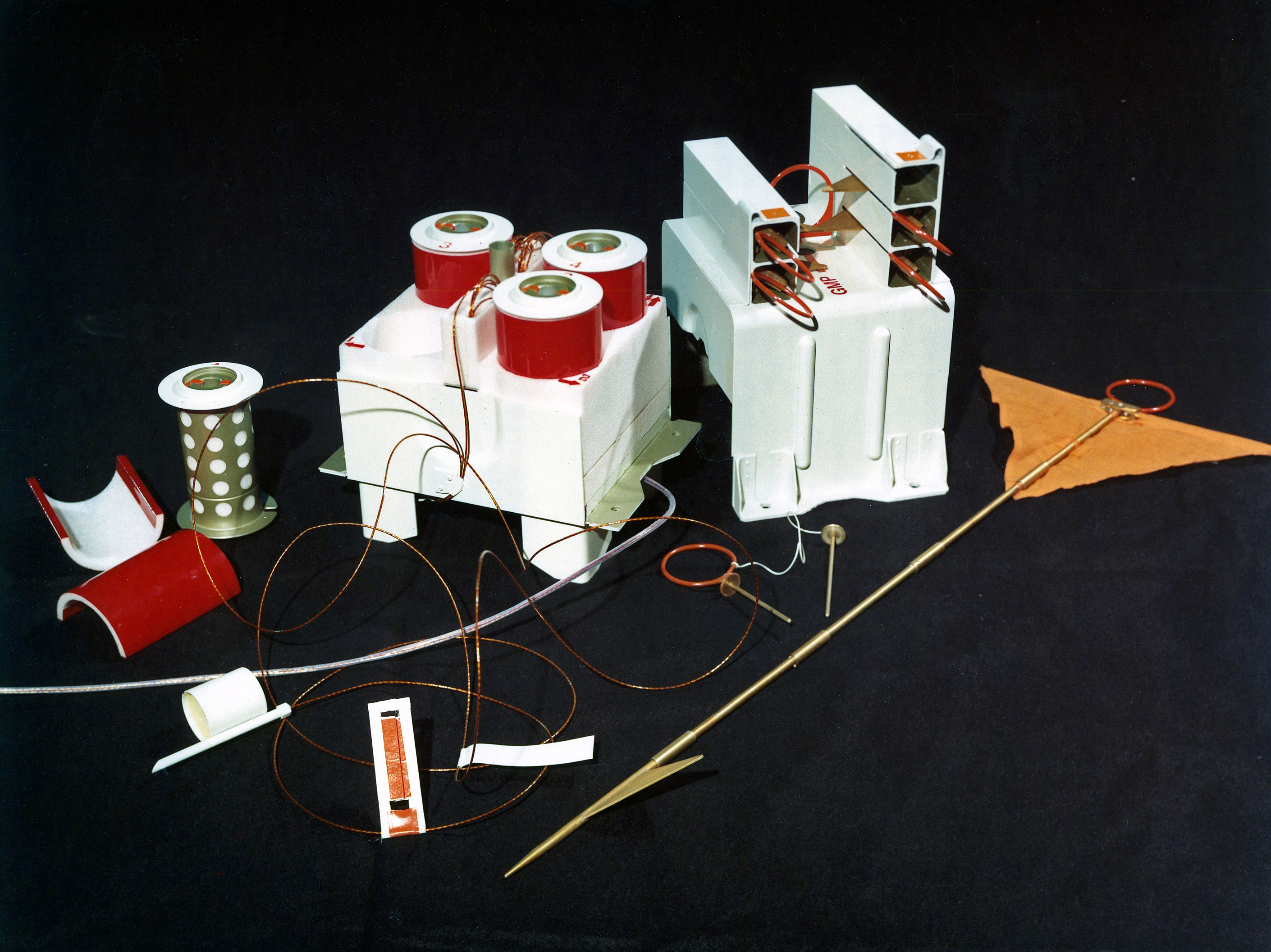
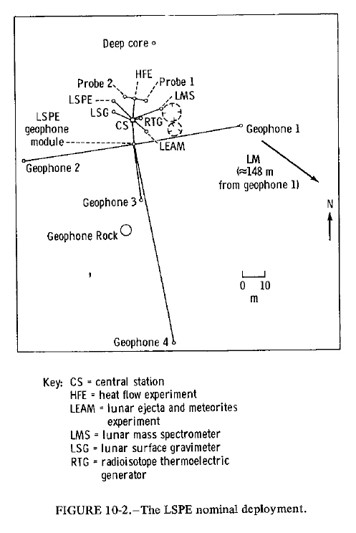
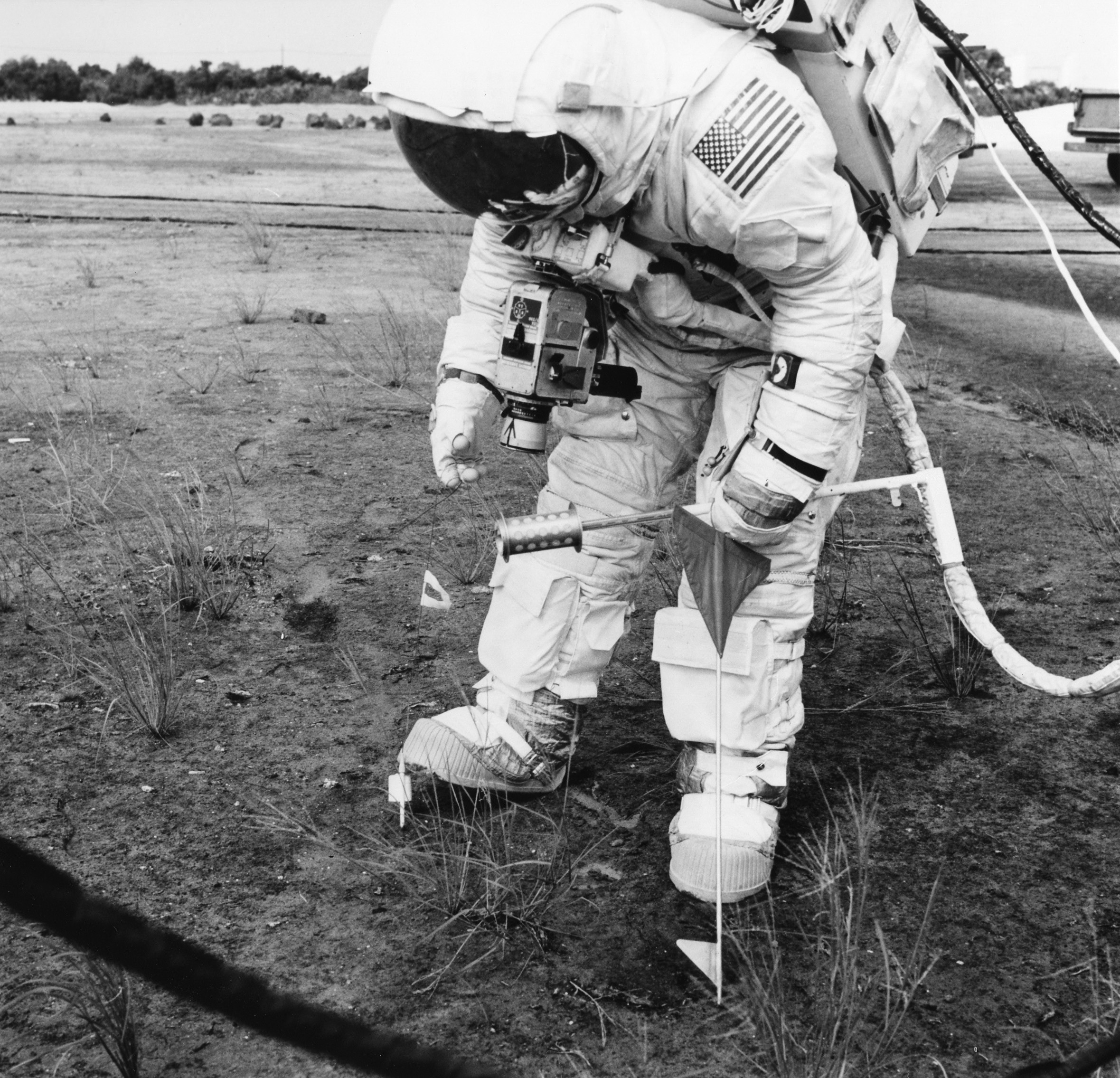
Left: The components of the Lunar Seismic Profiling Experiment (LSPE), part of the Apollo 17 Apollo Lunar Surface Experiment Package (ALSEP). Middle: Schematic diagram of the position of the various components of the LSPE. Right: During training, Apollo 17 astronaut Harrison H. “Jack” Schmitt deploys a geophone for the LSPE.
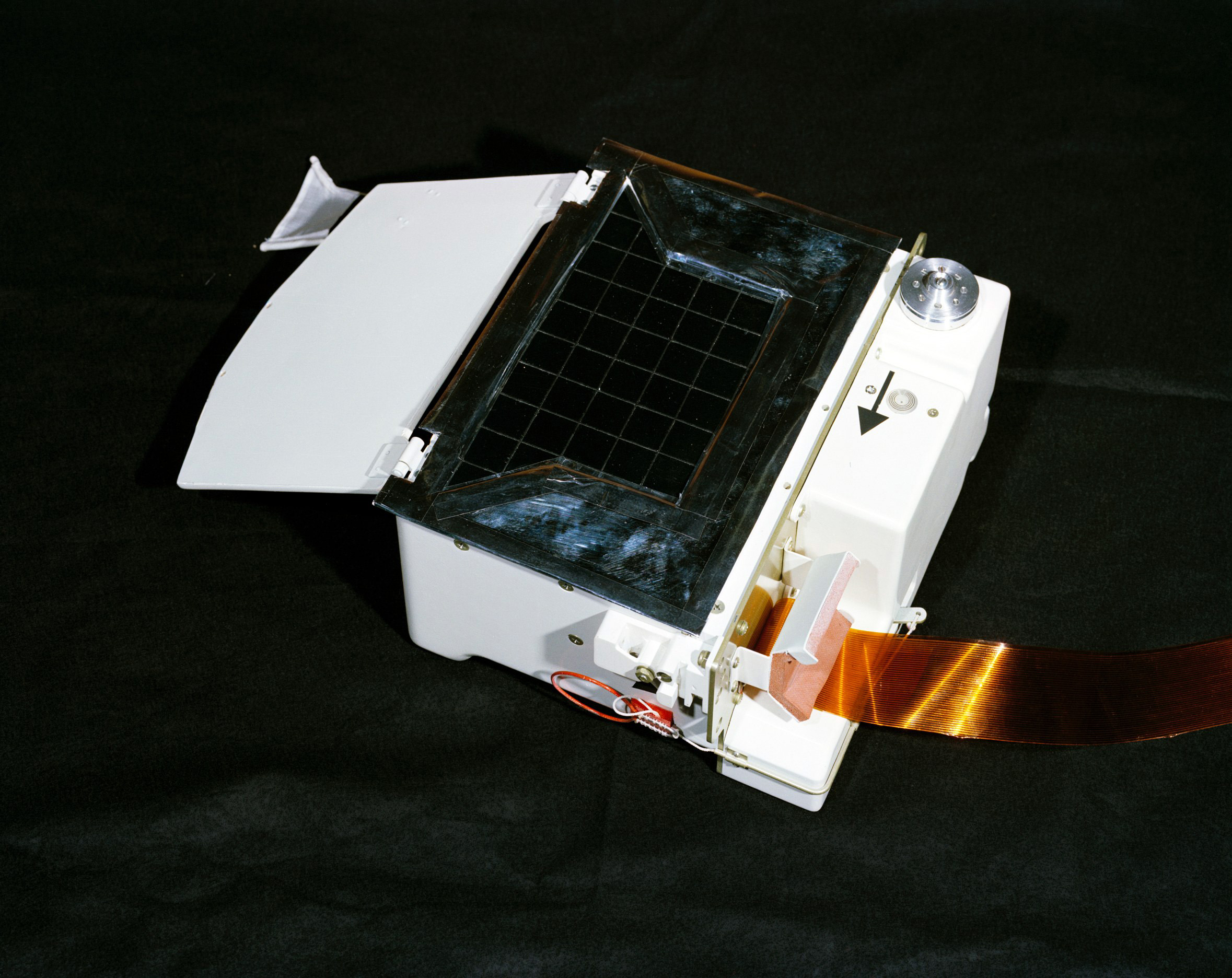
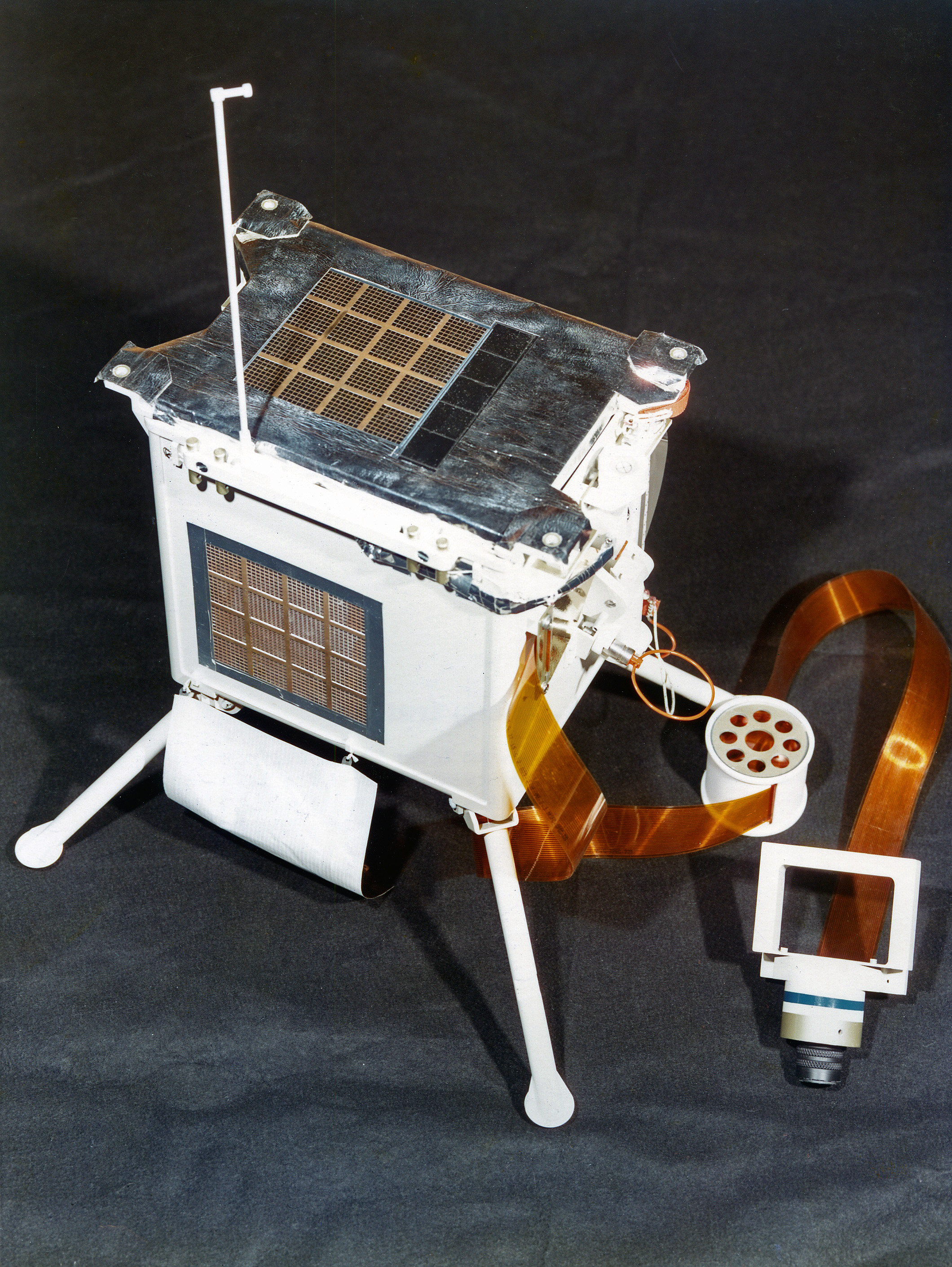
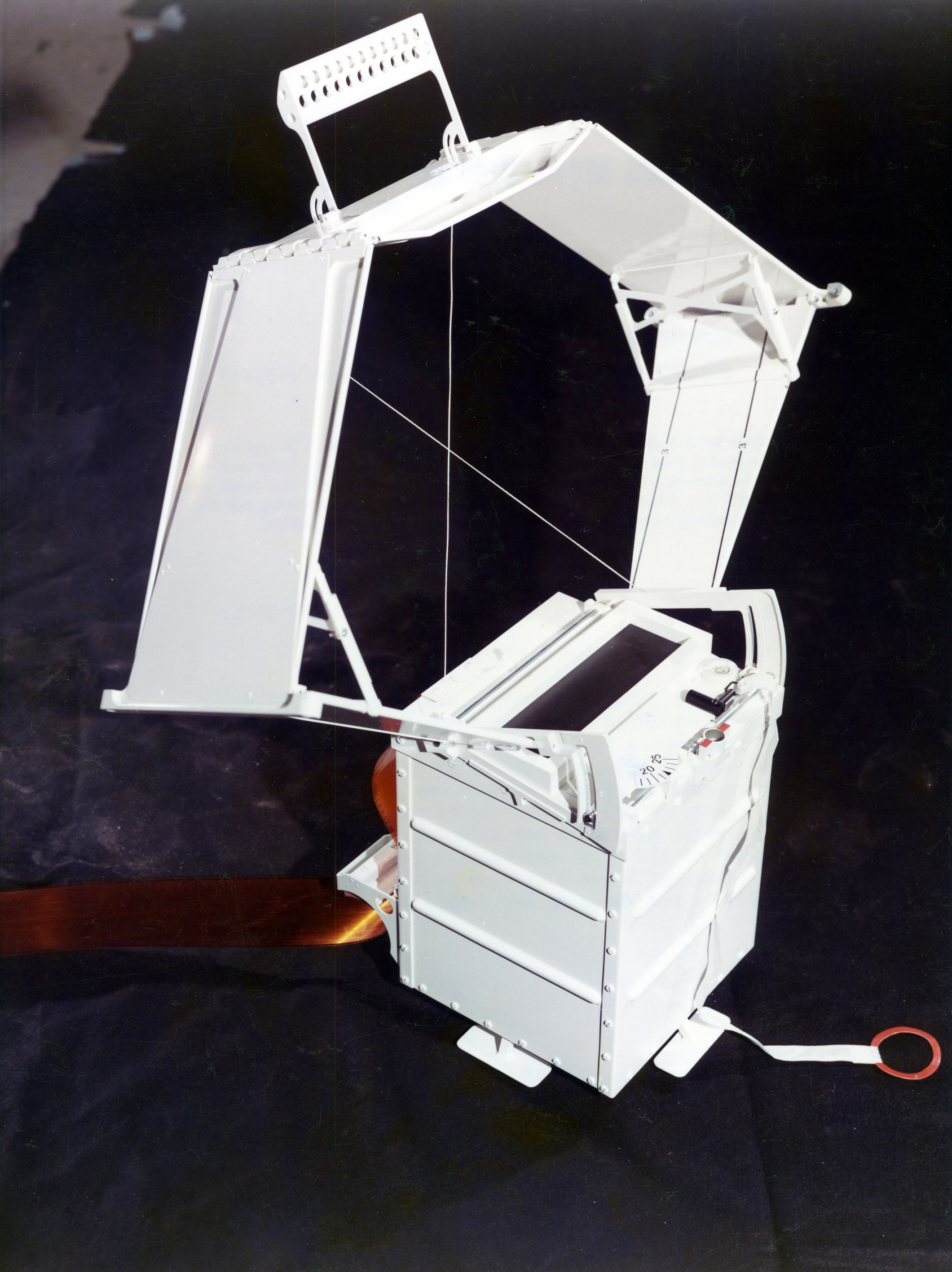
Left: The Lunar Atmospheric Composition Experiment (LACE). Middle: The Lunar Ejecta and Meteorite (LEAM) experiment. Right: The Lunar Surface Gravimetry (LSG) experiment.
Apollo 17 carried four additional surface experiments not part of the ALSEP suite of instruments. These included:
The Lunar Surface Cosmic Ray Experiment (LSCRE) – two particle detectors deployed for about two days on the Moon, one exposed to the Sun, the other kept in the shade, to measure the flux of cosmic rays.
The Traverse Gravimeter – a portable device to determine the Moon’s internal structure by taking measurements at the immediate landing site and at remote locations during the traverses.
The Lunar Neutron Probe (LNP) – a 2.4-meter deep probe to measure the neutron flux in the lunar subsurface.
The Surface Electrical Properties (SEP) experiment – to measure the electromagnetic energy transmission, absorption, and reflective characteristics of the lunar surface and subsurface.
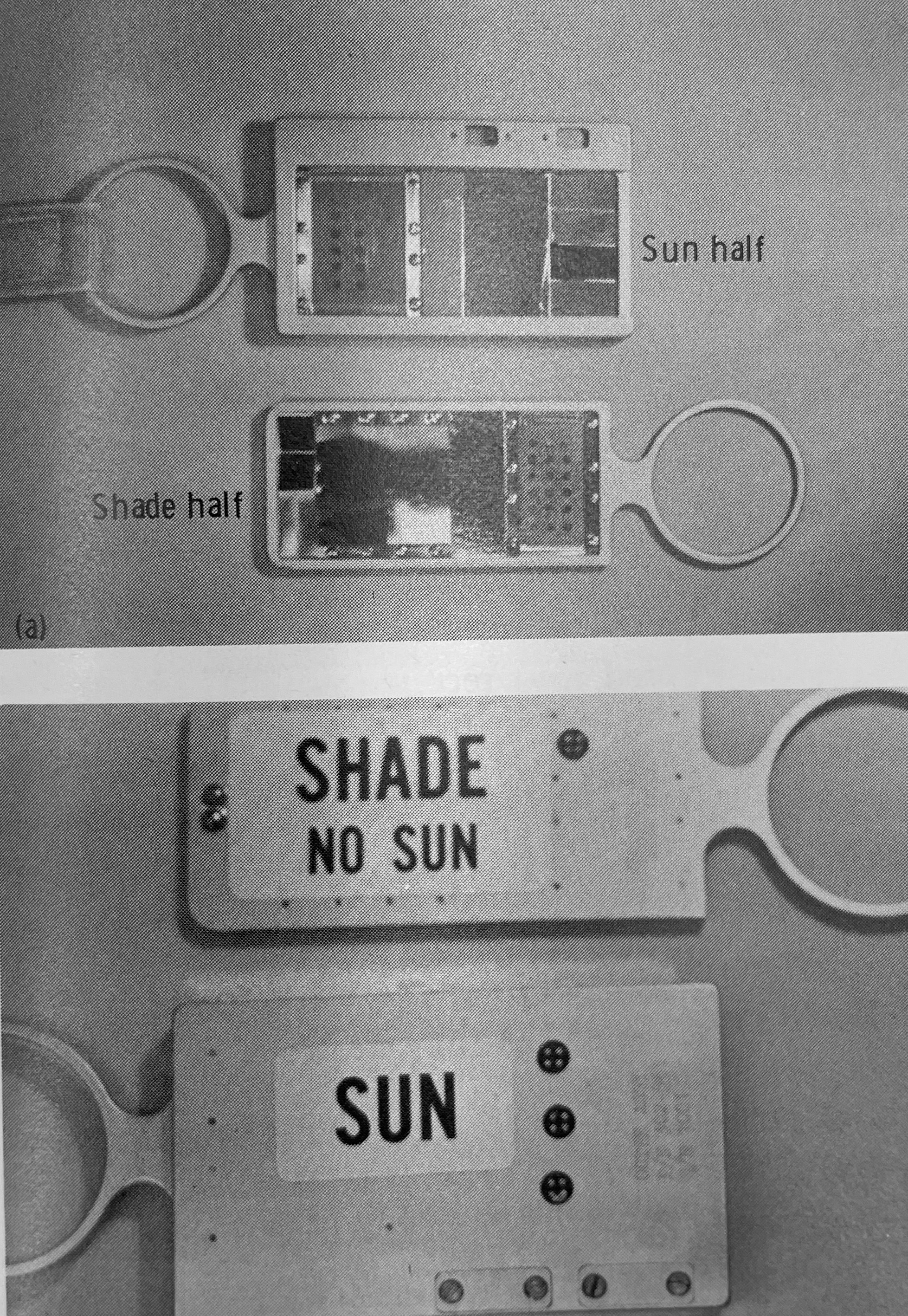
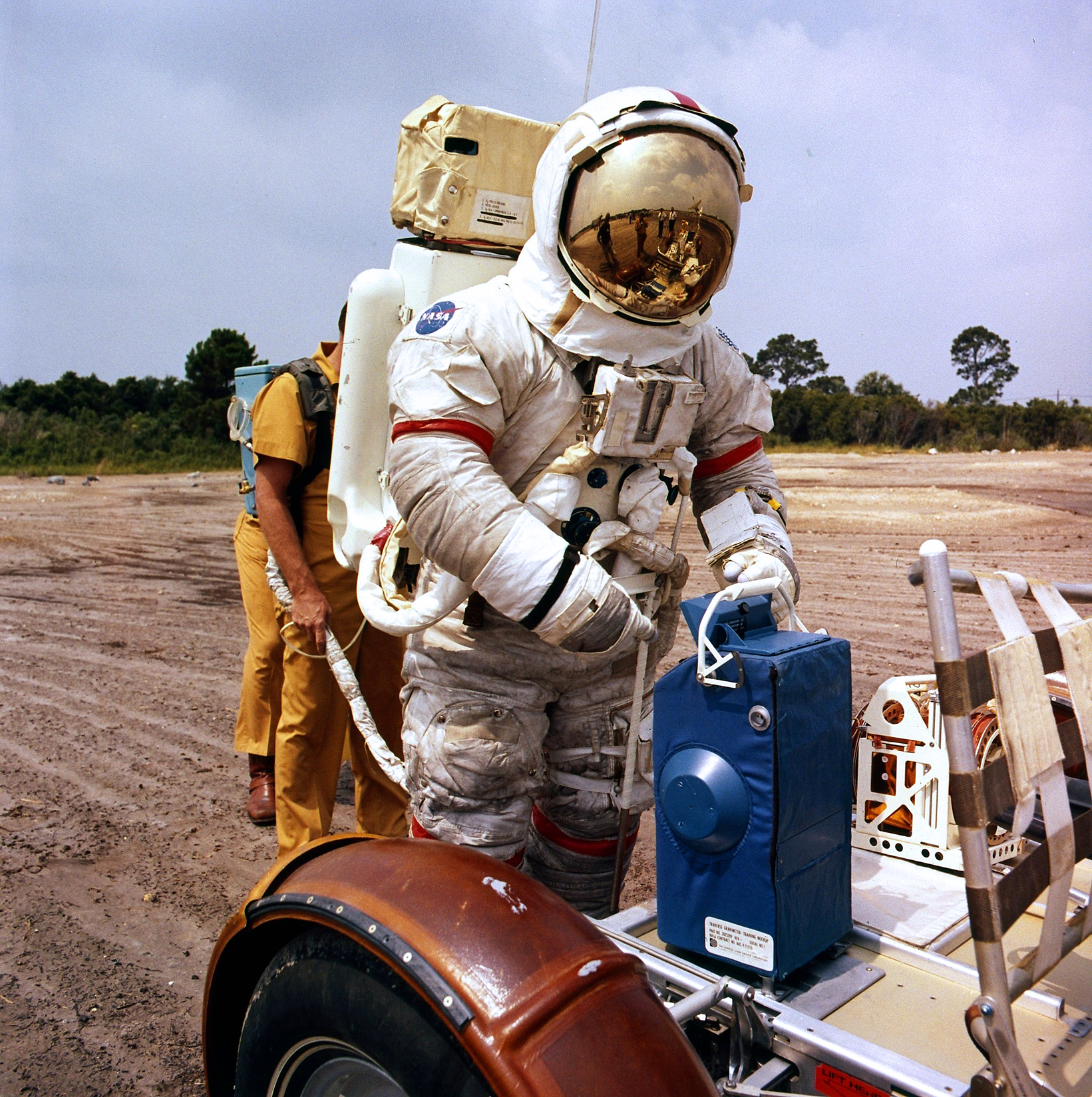
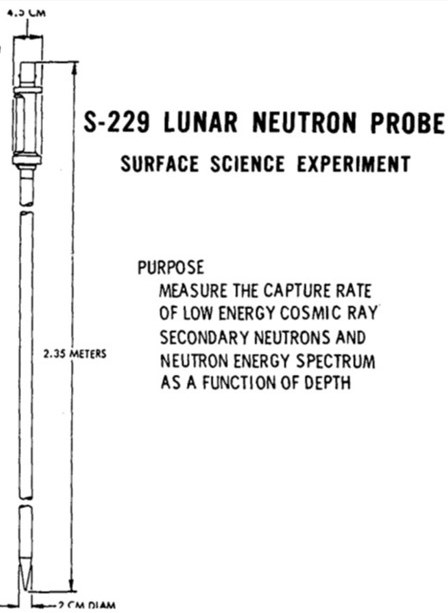

Left: The Lunar Surface Cosmic Ray Experiment (LSCRE). Middle left: Apollo 17 astronaut Eugene A. Cernan trains with the Traverse Gravimetry Experiment (TGE). Middle right: Schematic diagram of the Lunar Neutron Probe. Right: During training, Apollo 17 astronaut Harrison H. “Jack” Schmitt walks away
To be continued…
John Uri
NASA Johnson Space Center




